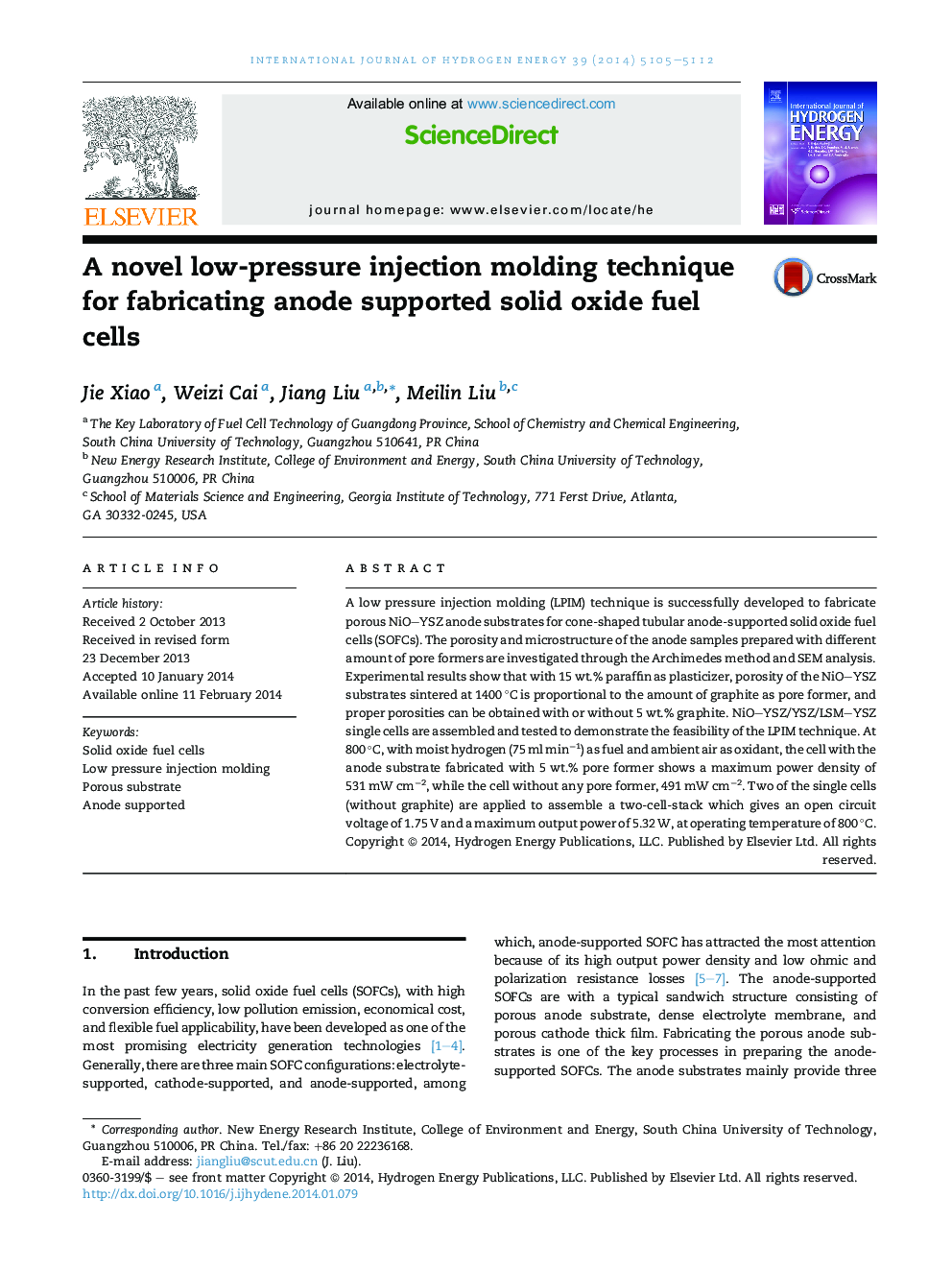| Article ID | Journal | Published Year | Pages | File Type |
|---|---|---|---|---|
| 1281279 | International Journal of Hydrogen Energy | 2014 | 8 Pages |
•Cone-shaped tubular anode-supported SOFCs are fabricated by LPIM technique.•The anode substrates are with high accuracy in size and low deformation in shape.•Anode substrates with enough porosity can be obtained with 15 wt.% paraffin used.•A two-cell-stack (without graphite) presents an output power of 5.32 W at 800 °C.
A low pressure injection molding (LPIM) technique is successfully developed to fabricate porous NiO–YSZ anode substrates for cone-shaped tubular anode-supported solid oxide fuel cells (SOFCs). The porosity and microstructure of the anode samples prepared with different amount of pore formers are investigated through the Archimedes method and SEM analysis. Experimental results show that with 15 wt.% paraffin as plasticizer, porosity of the NiO–YSZ substrates sintered at 1400 °C is proportional to the amount of graphite as pore former, and proper porosities can be obtained with or without 5 wt.% graphite. NiO–YSZ/YSZ/LSM–YSZ single cells are assembled and tested to demonstrate the feasibility of the LPIM technique. At 800 °C, with moist hydrogen (75 ml min−1) as fuel and ambient air as oxidant, the cell with the anode substrate fabricated with 5 wt.% pore former shows a maximum power density of 531 mW cm−2, while the cell without any pore former, 491 mW cm−2. Two of the single cells (without graphite) are applied to assemble a two-cell-stack which gives an open circuit voltage of 1.75 V and a maximum output power of 5.32 W, at operating temperature of 800 °C.
